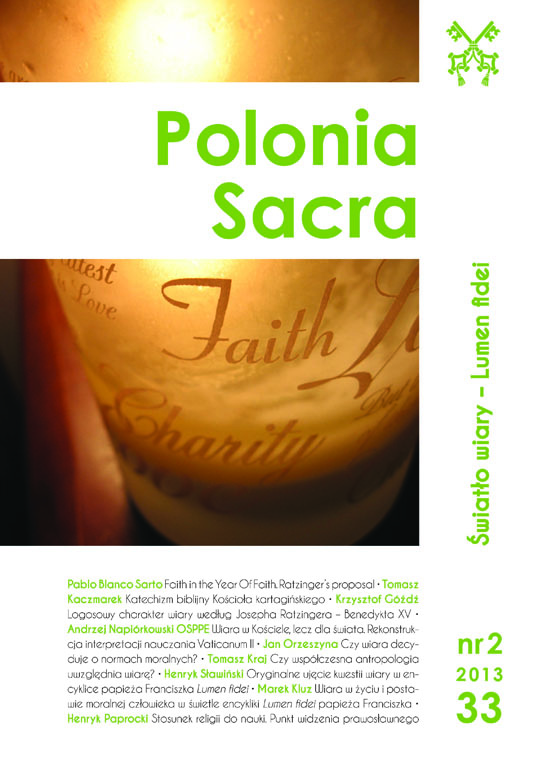Definicja piękna w XII wieku a architektoniczna ekspozycja ołtarza w epoce gotyckiej
DOI:
https://doi.org/10.15633/ps.380Słowa kluczowe:
estetyka, piękno, ołtarz, epoka gotycka, chór gotyckiAbstrakt
This article, while taking into account the mystical reality of a relic, defines gothic initiated by the abbot Surger with the construction of the first gothic basilica in Saint-Denis near Paris in the XII century, as a reality required to know the difference between individual invisible beauty and corporeal visible beauty. When the differentiation of these types of beauty shows itself, not only thanks to the unknown in Romanism mystical structure of architecture in a gothic temple, but also through the construction of the gothic altar and hiding it in a choir enclosed by a lectorium in accordance to the zone of aisles, there is a necessity for a scientific definition of beauty connected with the then contemporary stylistic changes.
This is why this article presents the main schools of aesthetic thought from the XII century, which include: the aesthetic school of Hugon of St. Victor in Paris, Cistercian school with their representative St. Bernard from Clairvaux and the aesthetic school in Chartres. With the definition of artistic types of beauty, a lot of attention is applied to the separation and coexistence of spiritual and corporeal beauty. This decides about moral beauty and the beauty of clear existence, without which there is no right knowing of the ascetic Cistercian architecture and the reality of the gothic curtain altar. Finally it is emphasized, that the importance of twelfth century aesthetics is everlasting and had introduced order to gothic architectural space, which is still found in it now, as it had been in the time of abbot Surger of Saint-Denis.
Pobrania
Opublikowane
Numer
Dział
Licencja
Prawa autorskie (c) 2013 Mirosław Bogdan

Utwór dostępny jest na licencji Creative Commons Uznanie autorstwa 4.0 Międzynarodowe.
Autorzy publikujący w czasopiśmie udzielają jego wydawcy zgody o następującej treści:
- Autor zachowuje autorskie prawa majątkowe do utworu, a jednocześnie udziela wydawcy czasopisma zgody na jego pierwszą publikację w wersji drukowanej i wersji online na licencji Creative Commons Uznanie autorstwa 4.0 Międzynarodowe oraz zgody na wykonywanie opracowań, w tym przekładów.
- Autor ma możliwość udzielania zgody niewyłącznej na opublikowanie utworu w wersji, która ukazała się w czasopiśmie (np. zamieszczenia go w repozytorium instytucjonalnym lub opublikowania w książce), wraz z informacją o jego pierwszej publikacji w czasopiśmie.
- Autor może umieścić swój utwór online (np. w repozytorium instytucjonalnym lub na swojej stronie internetowej) jeszcze przed zgłoszeniem utworu do czasopisma.

